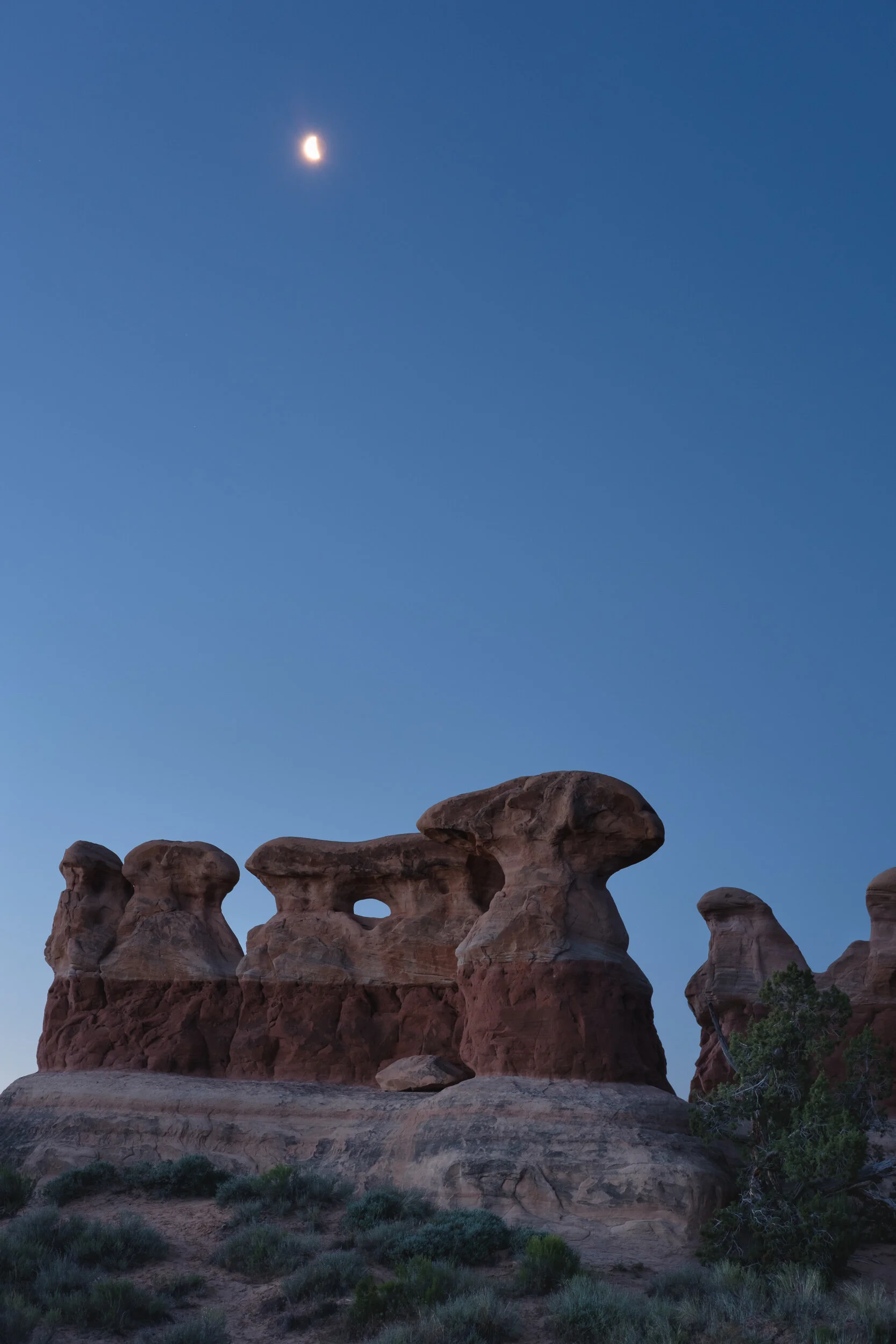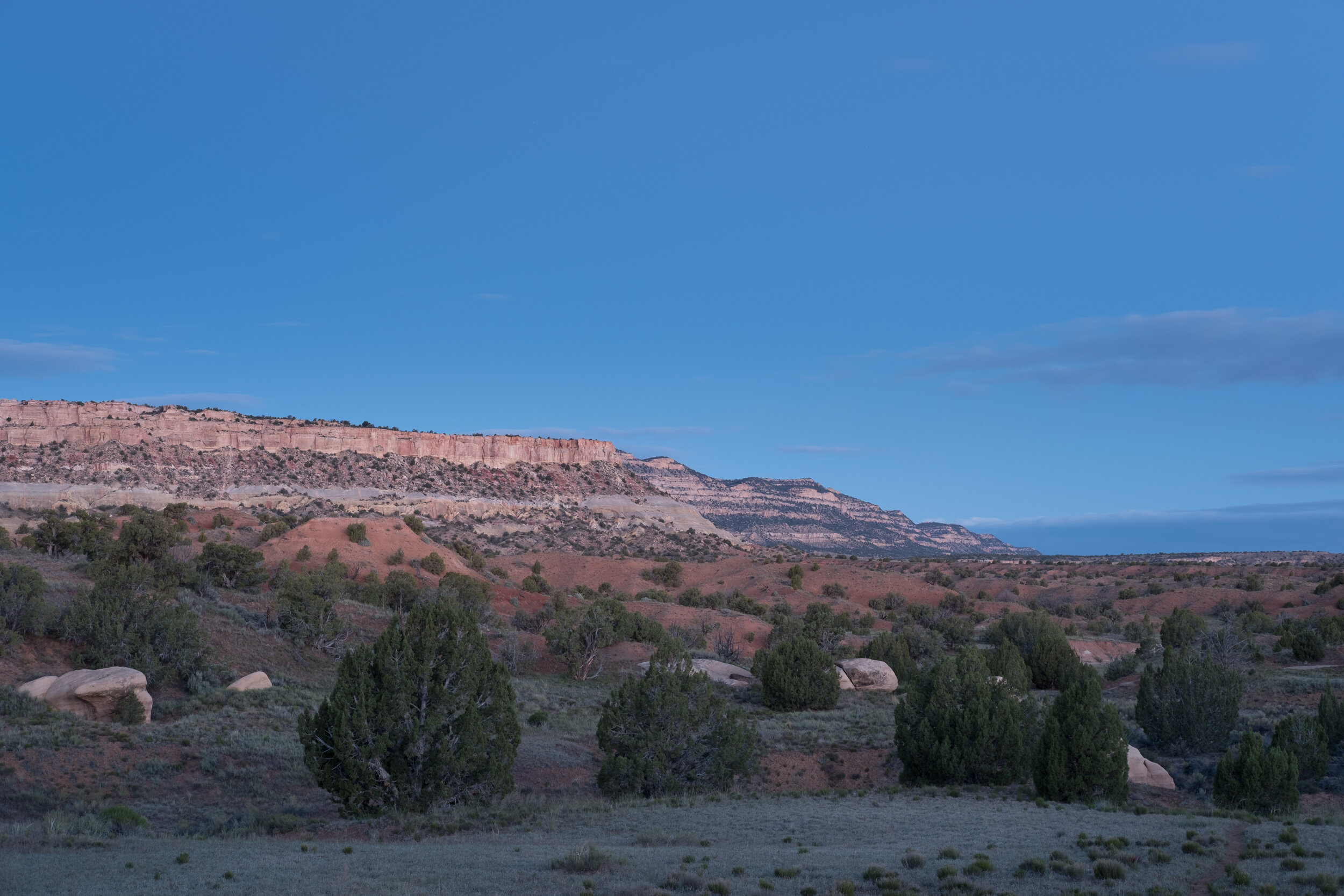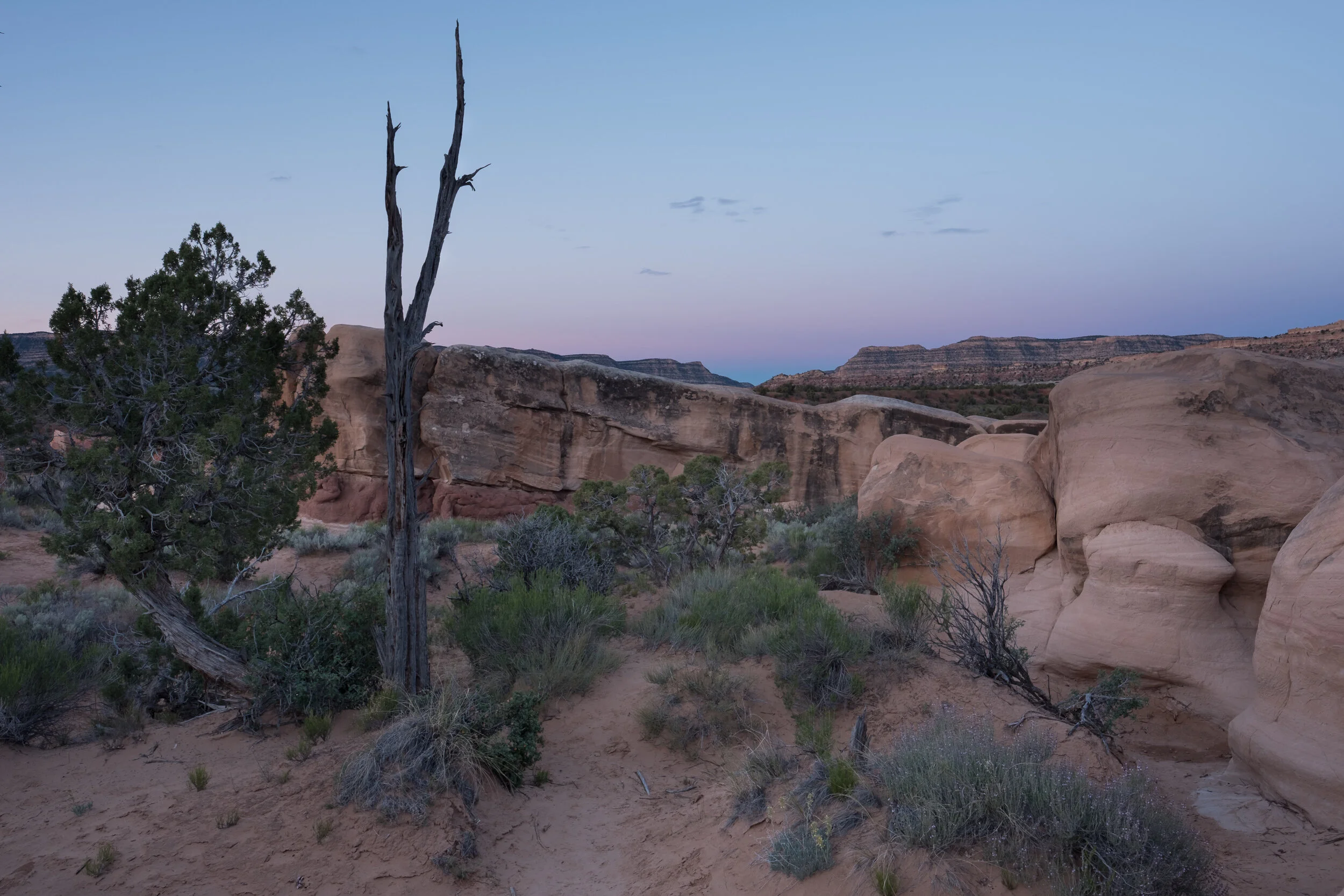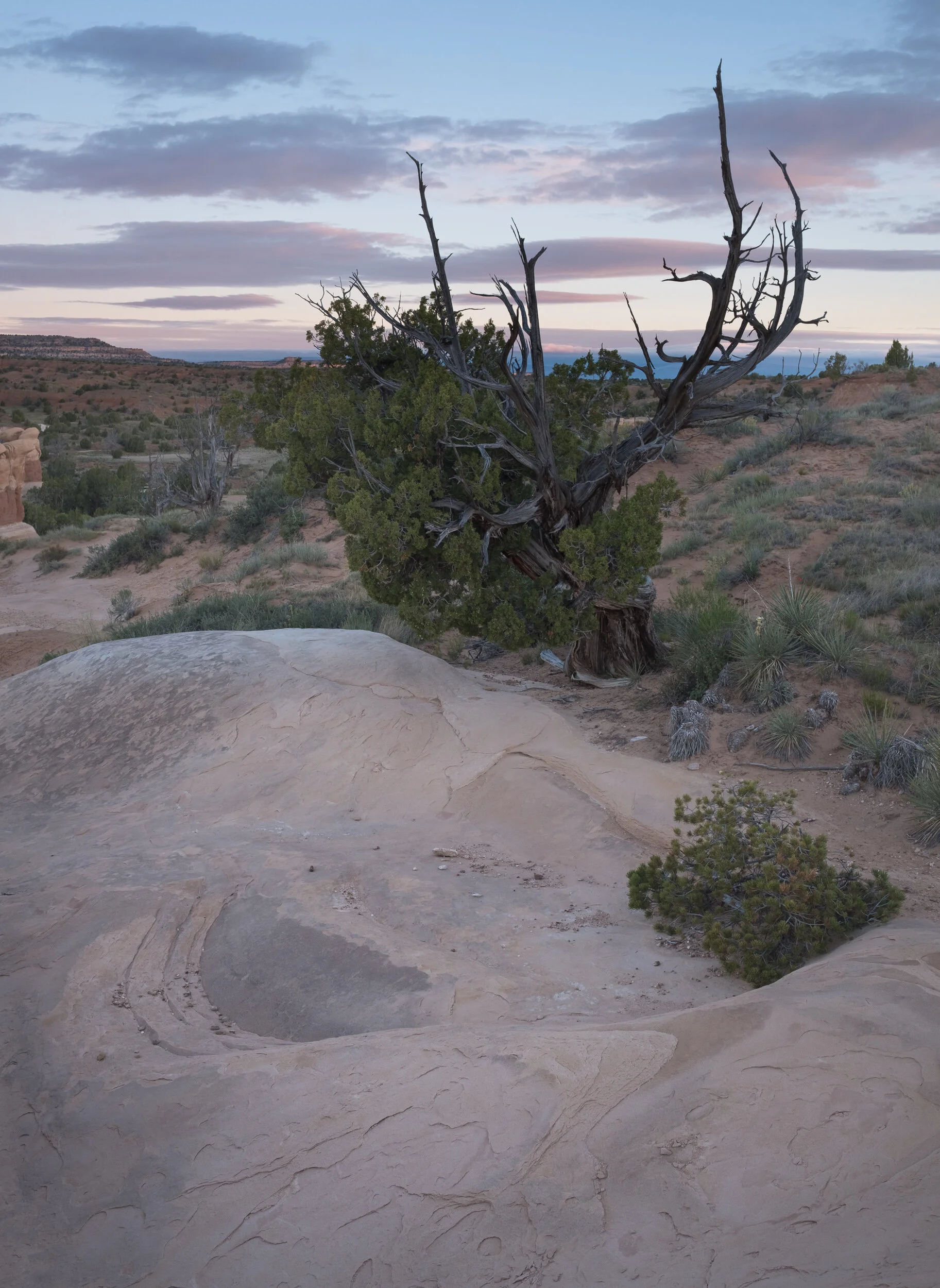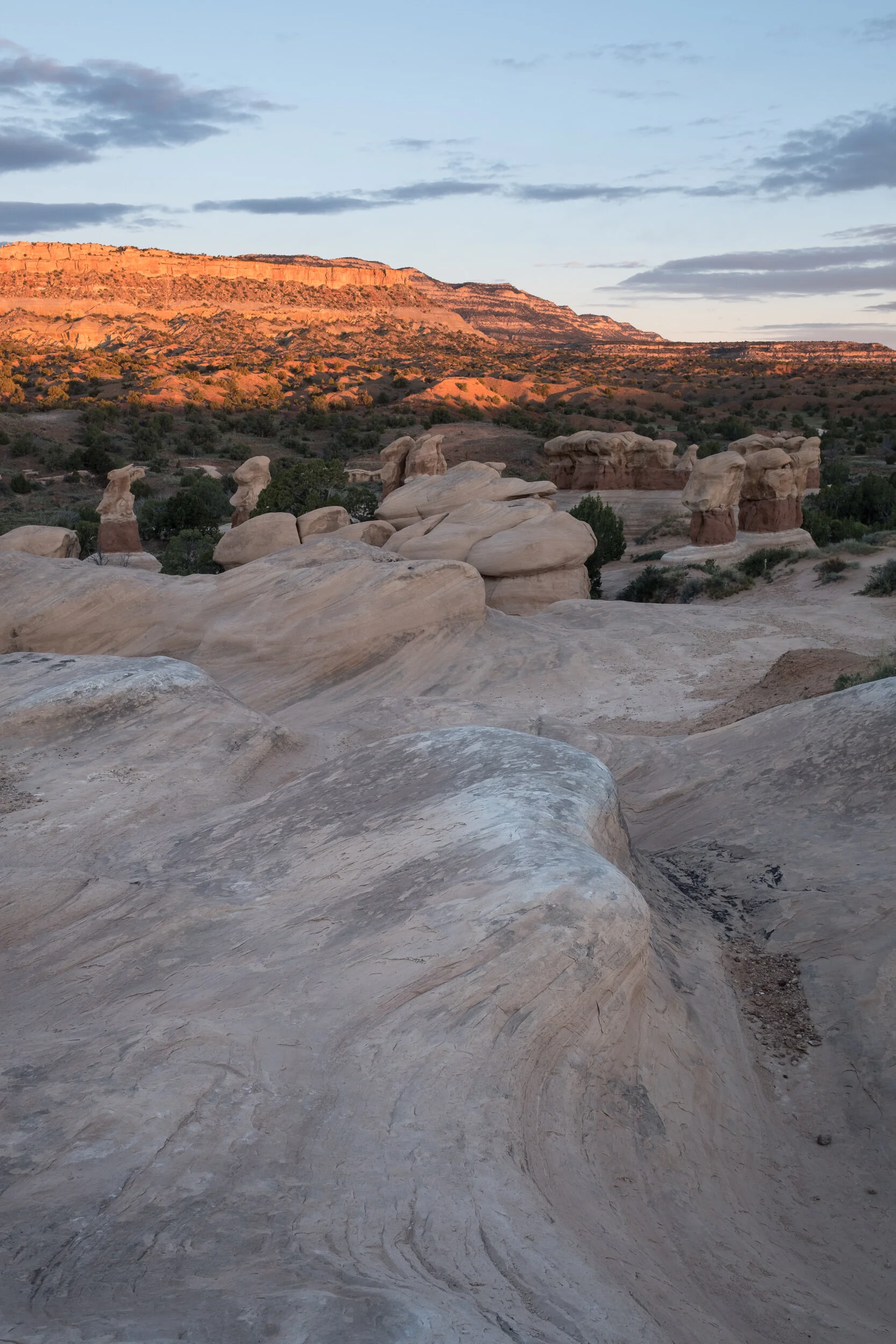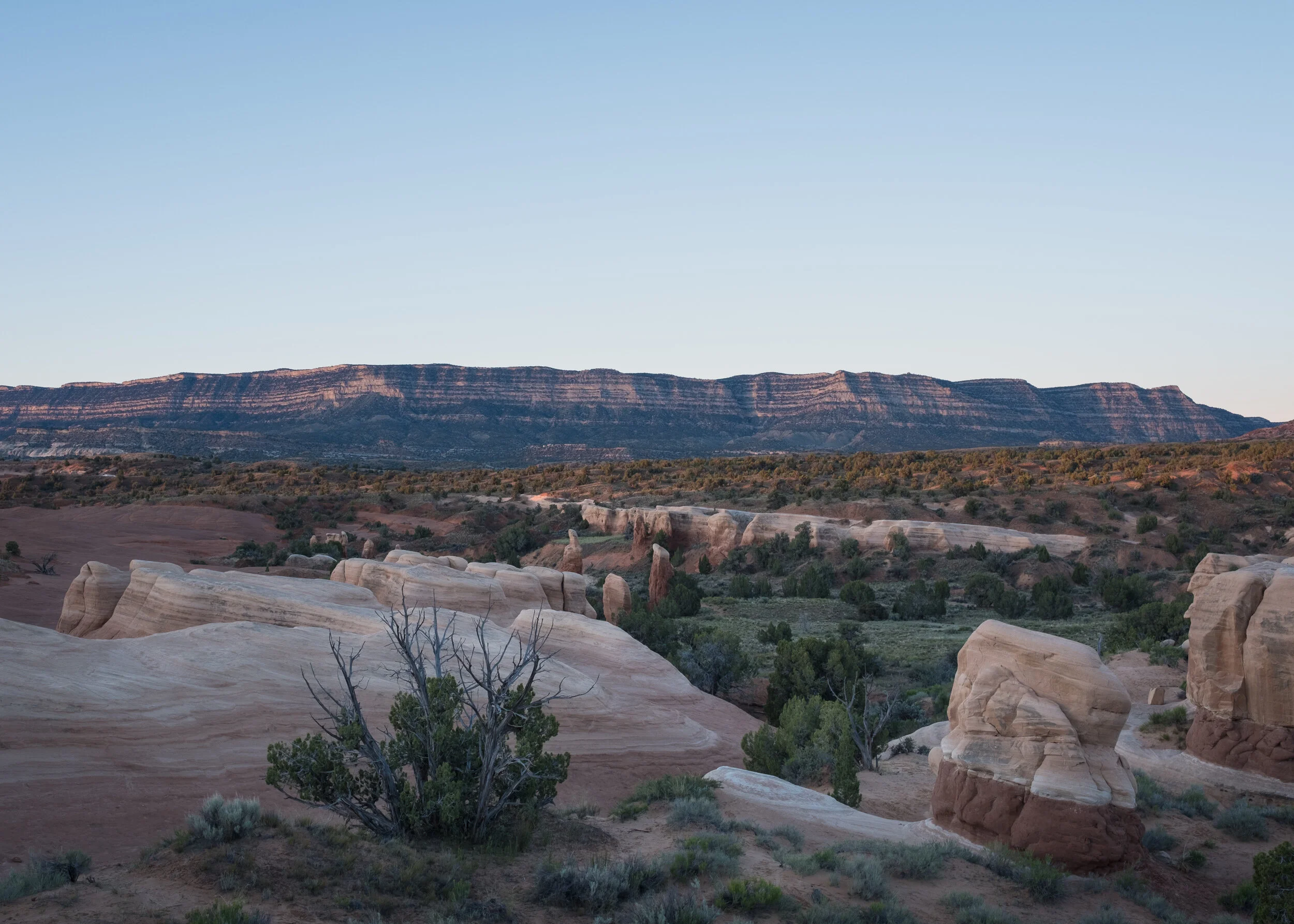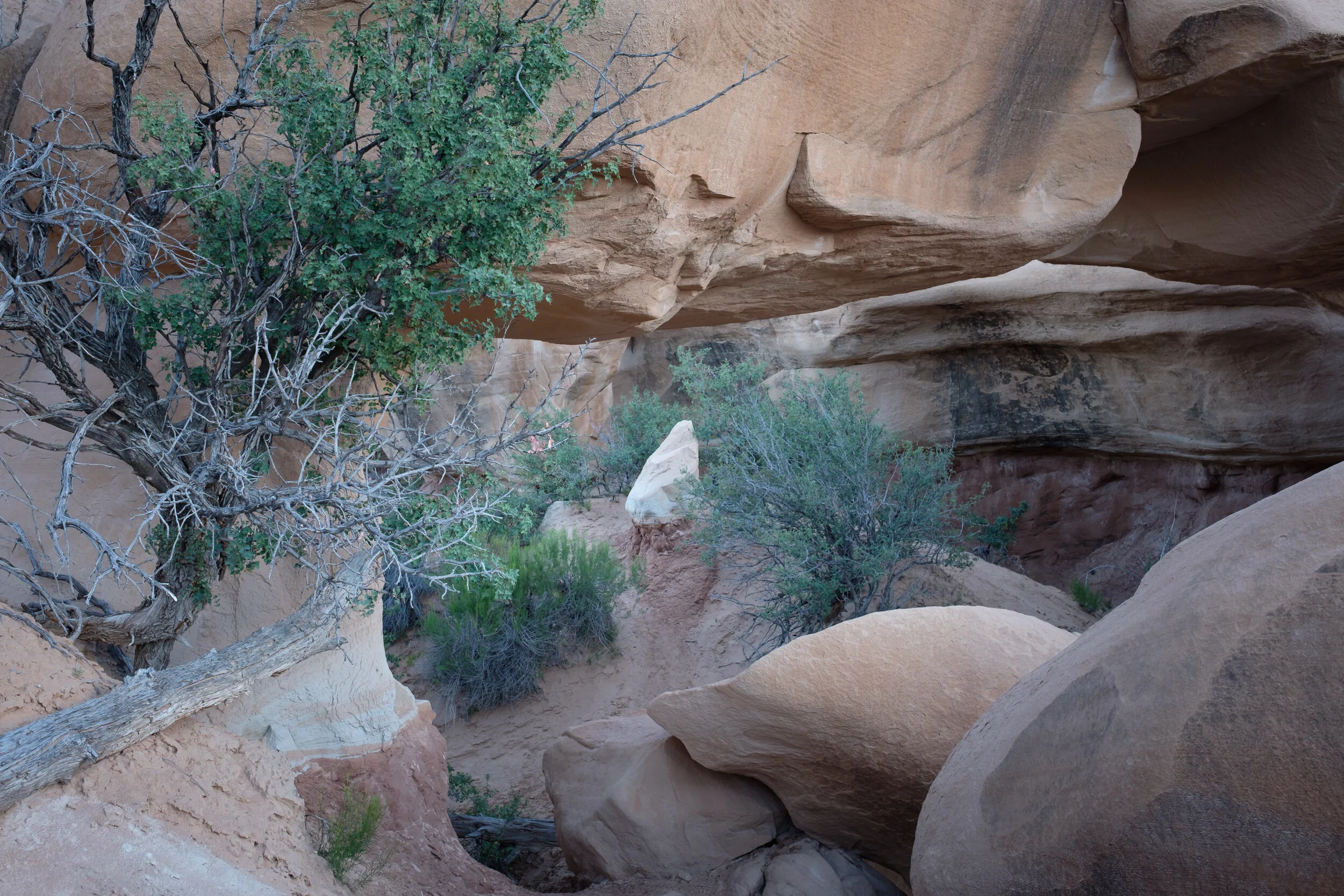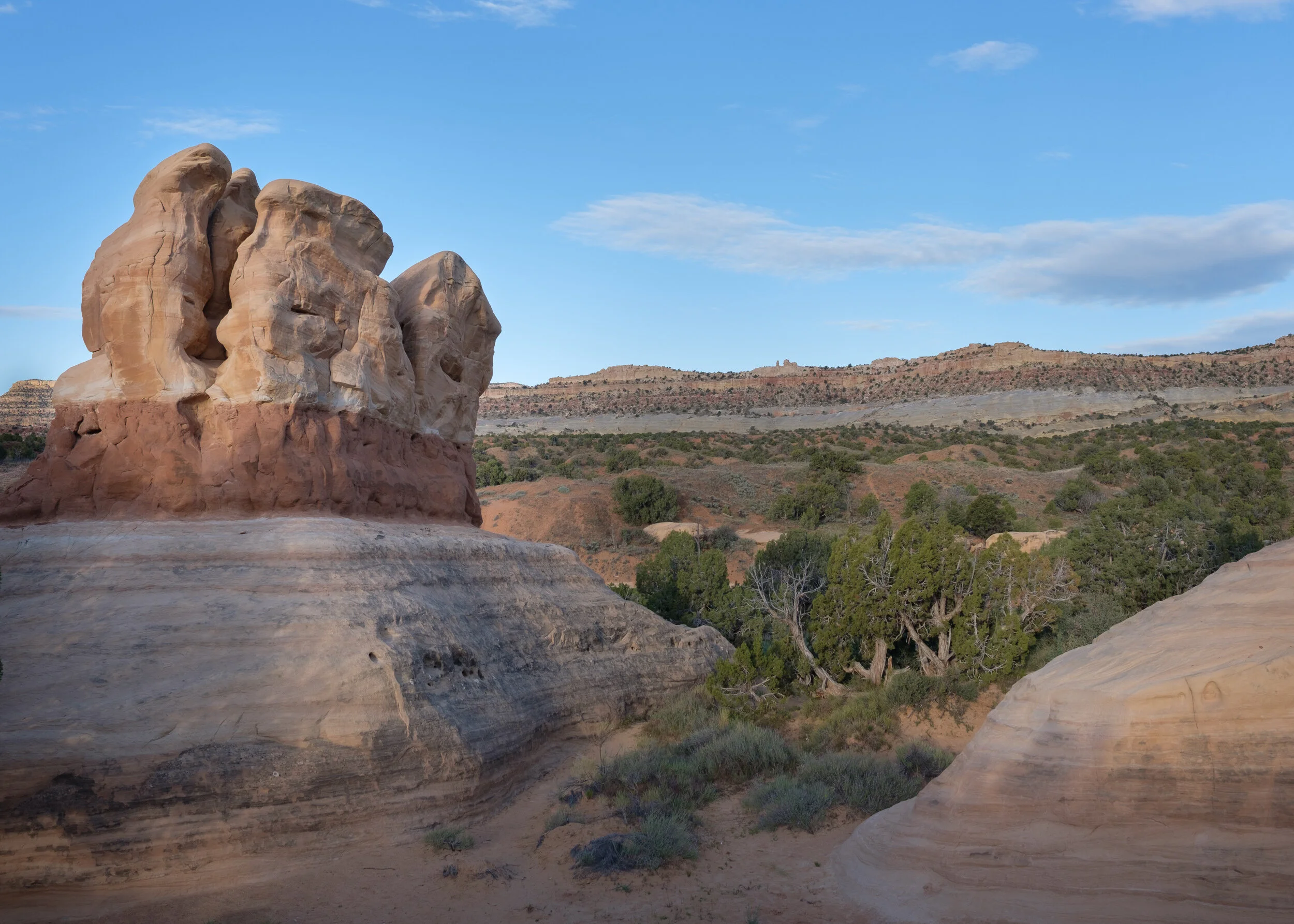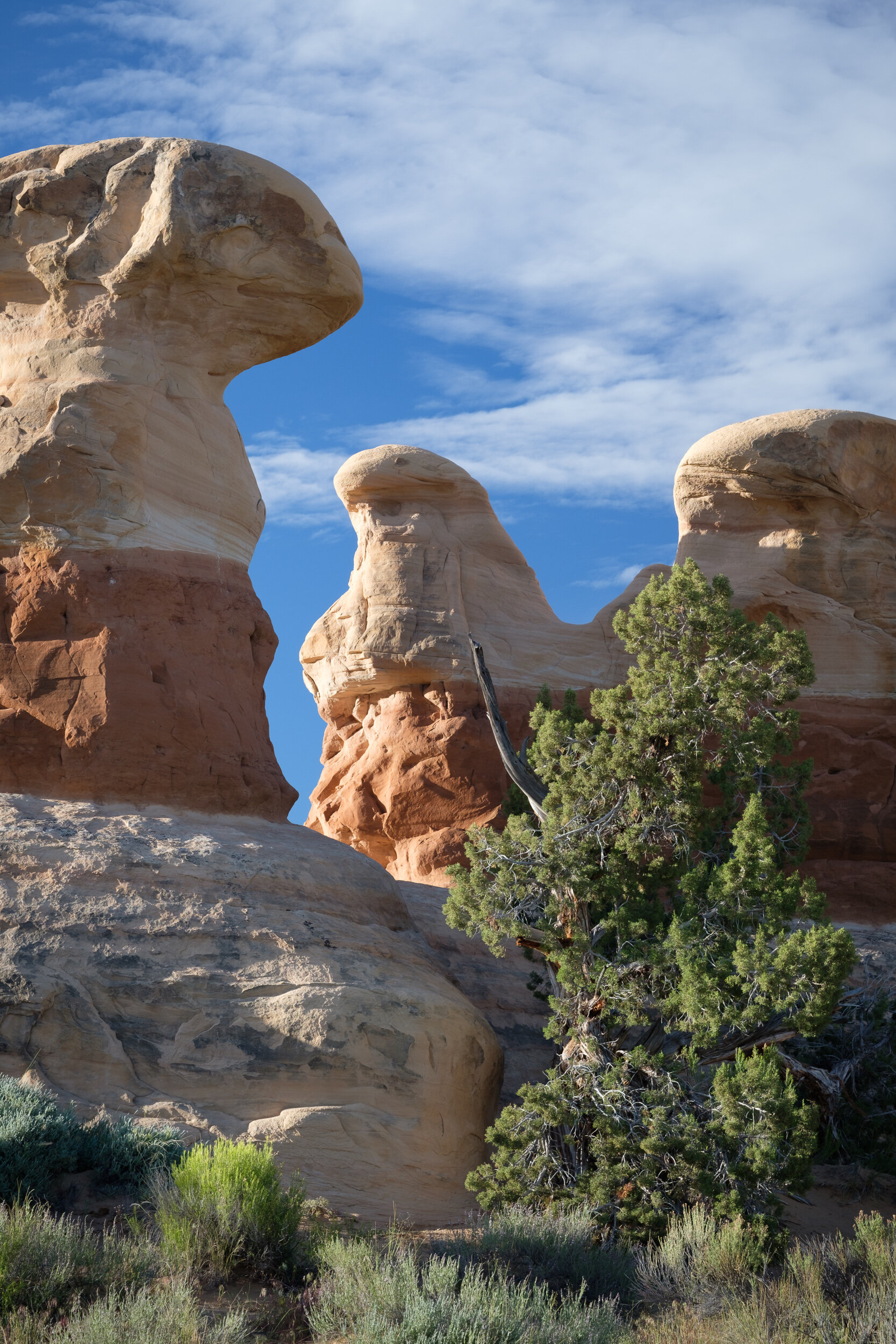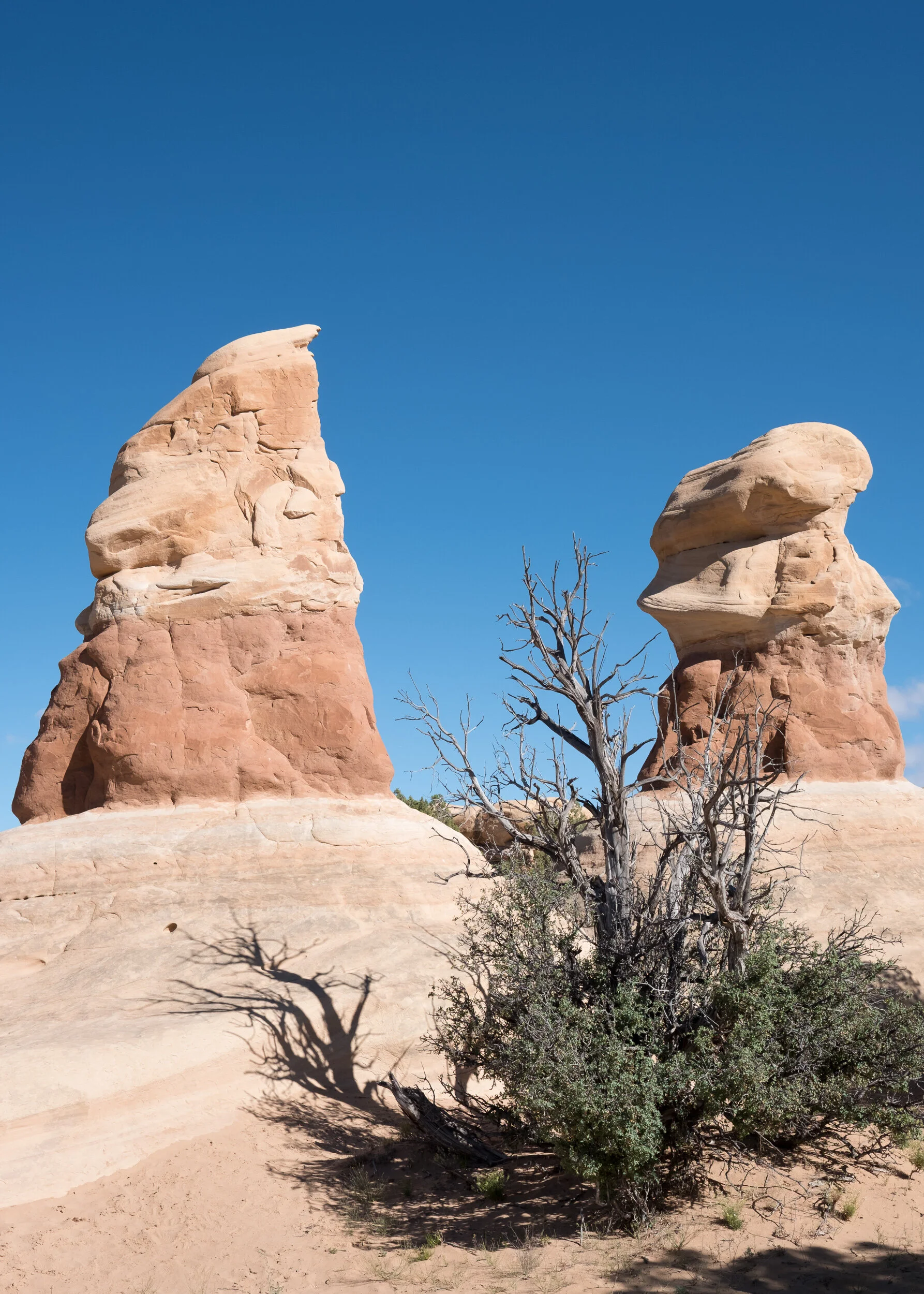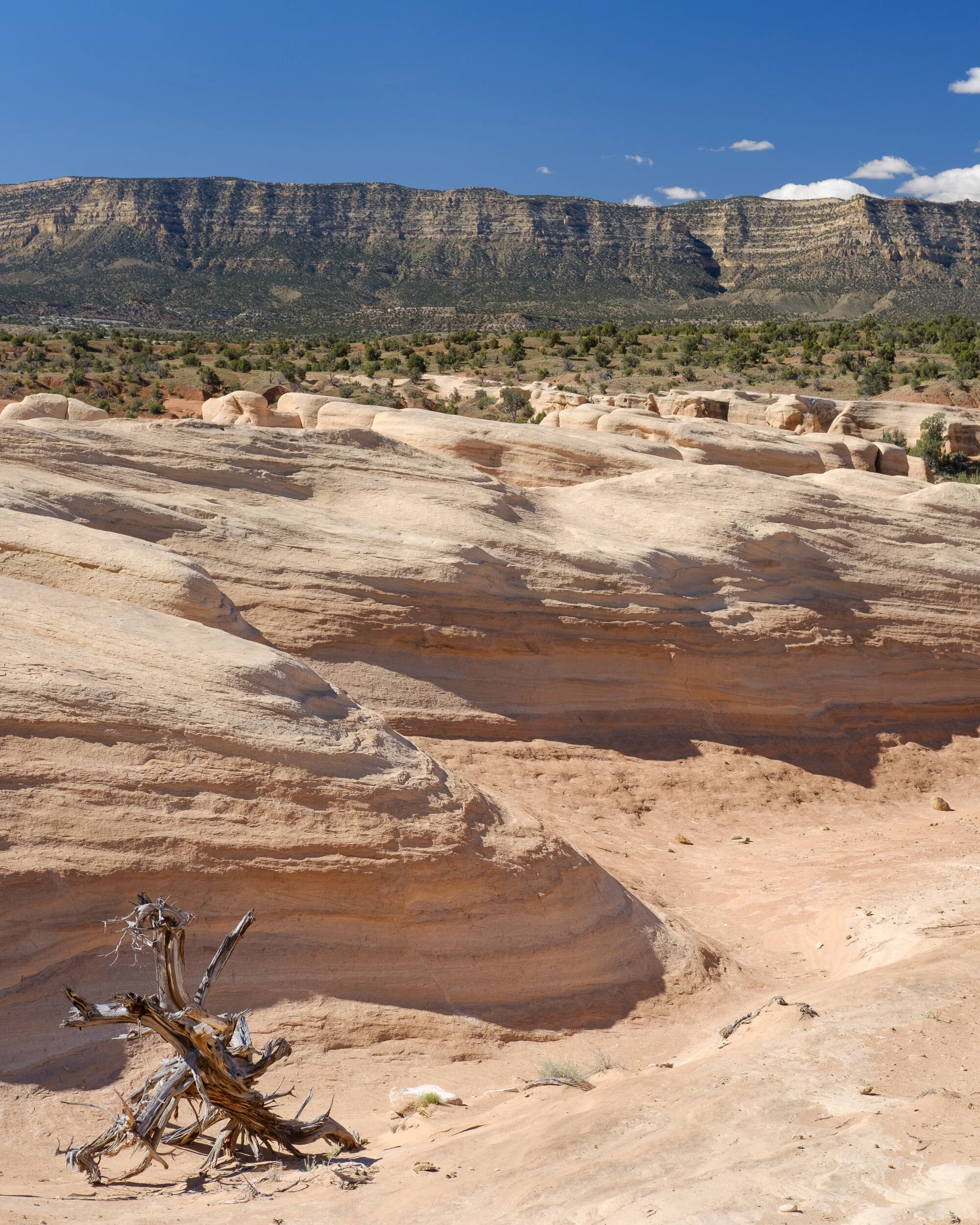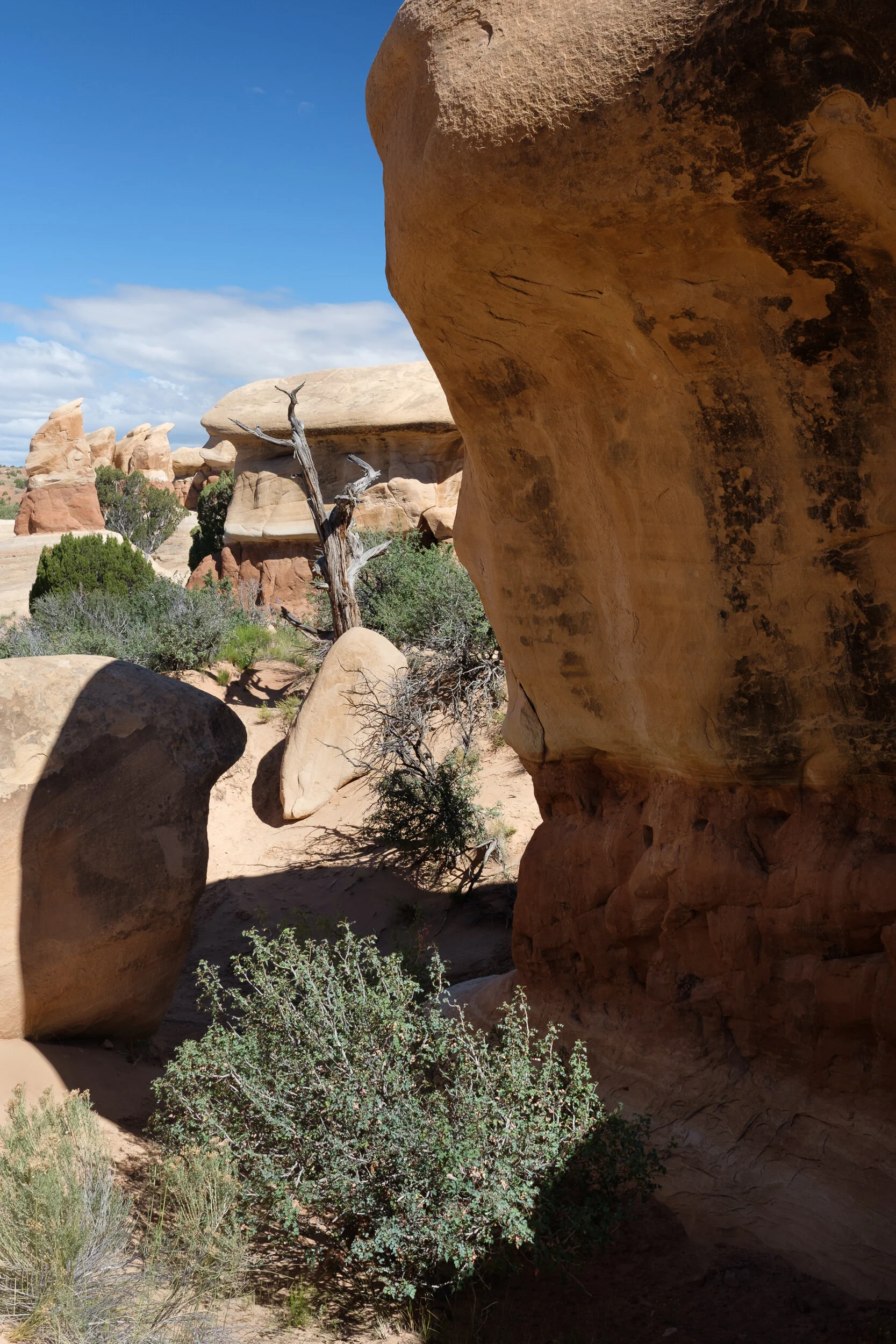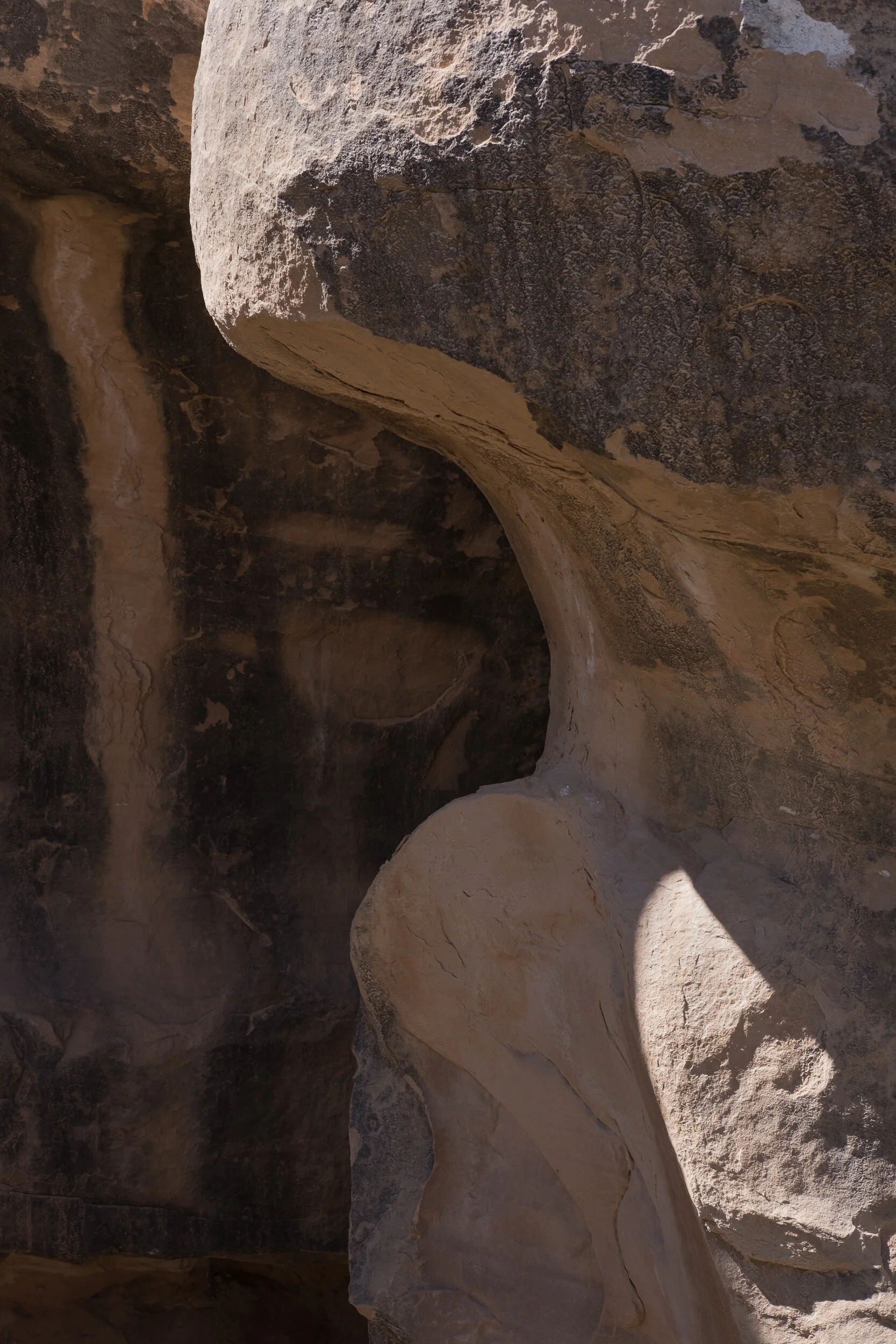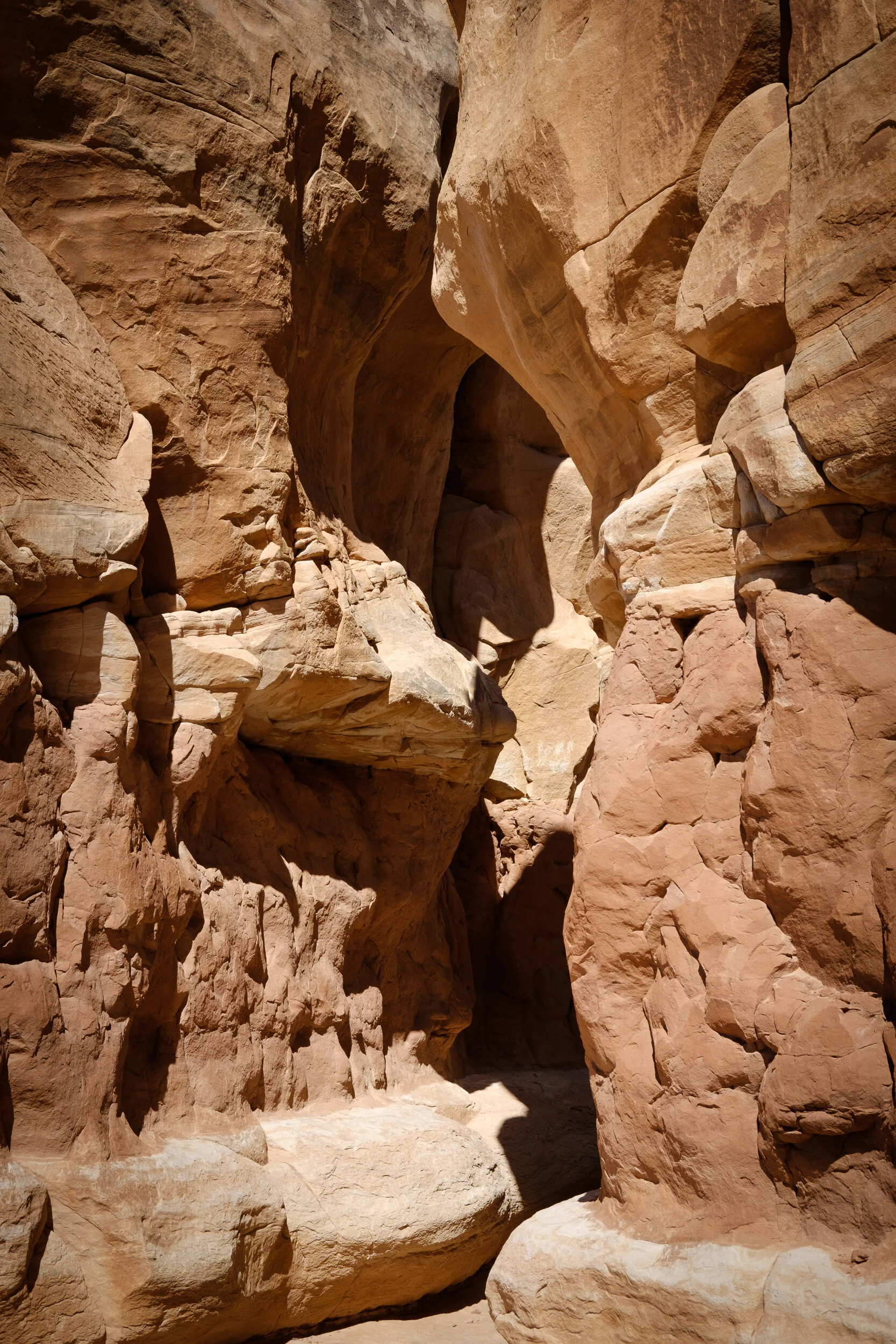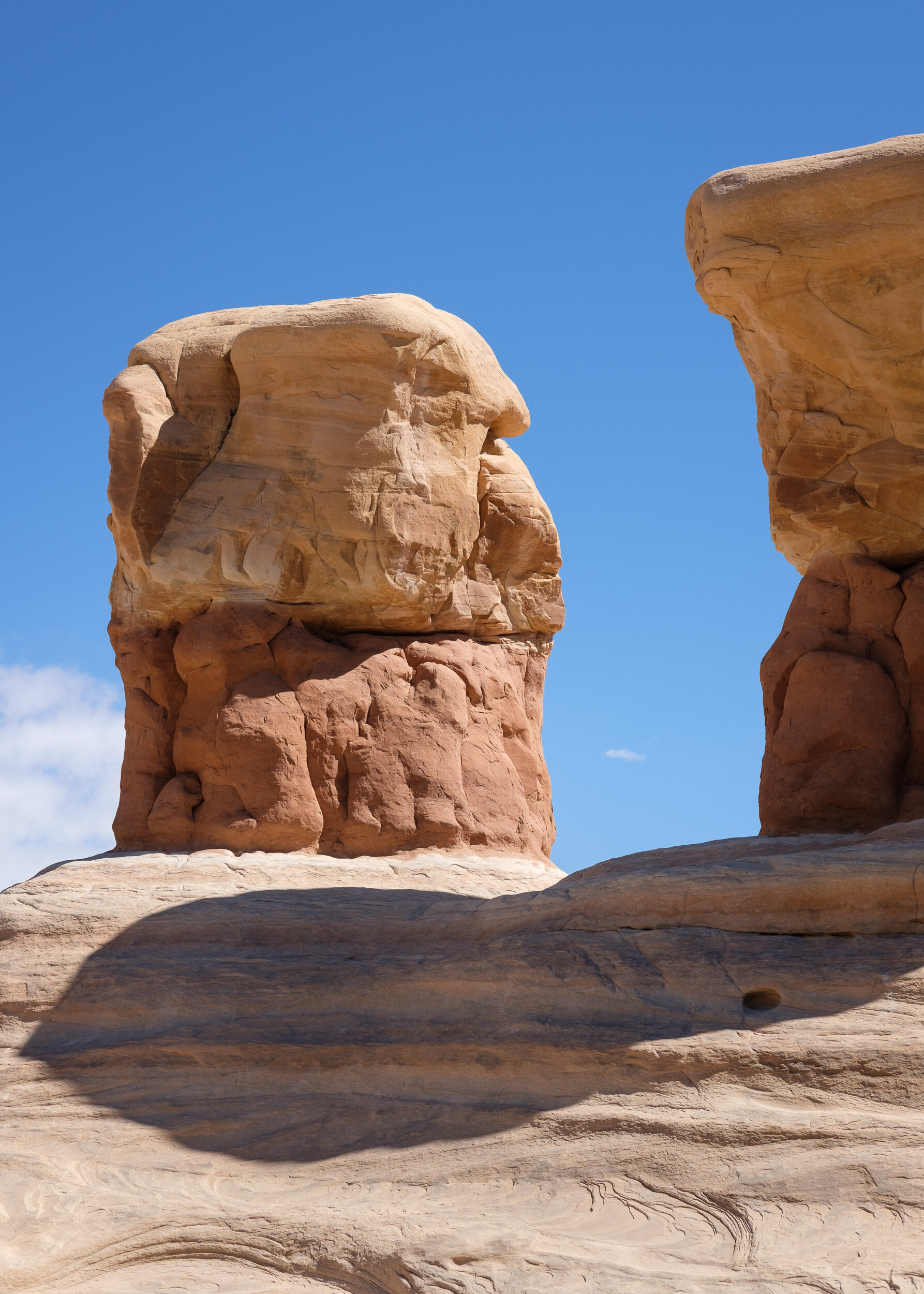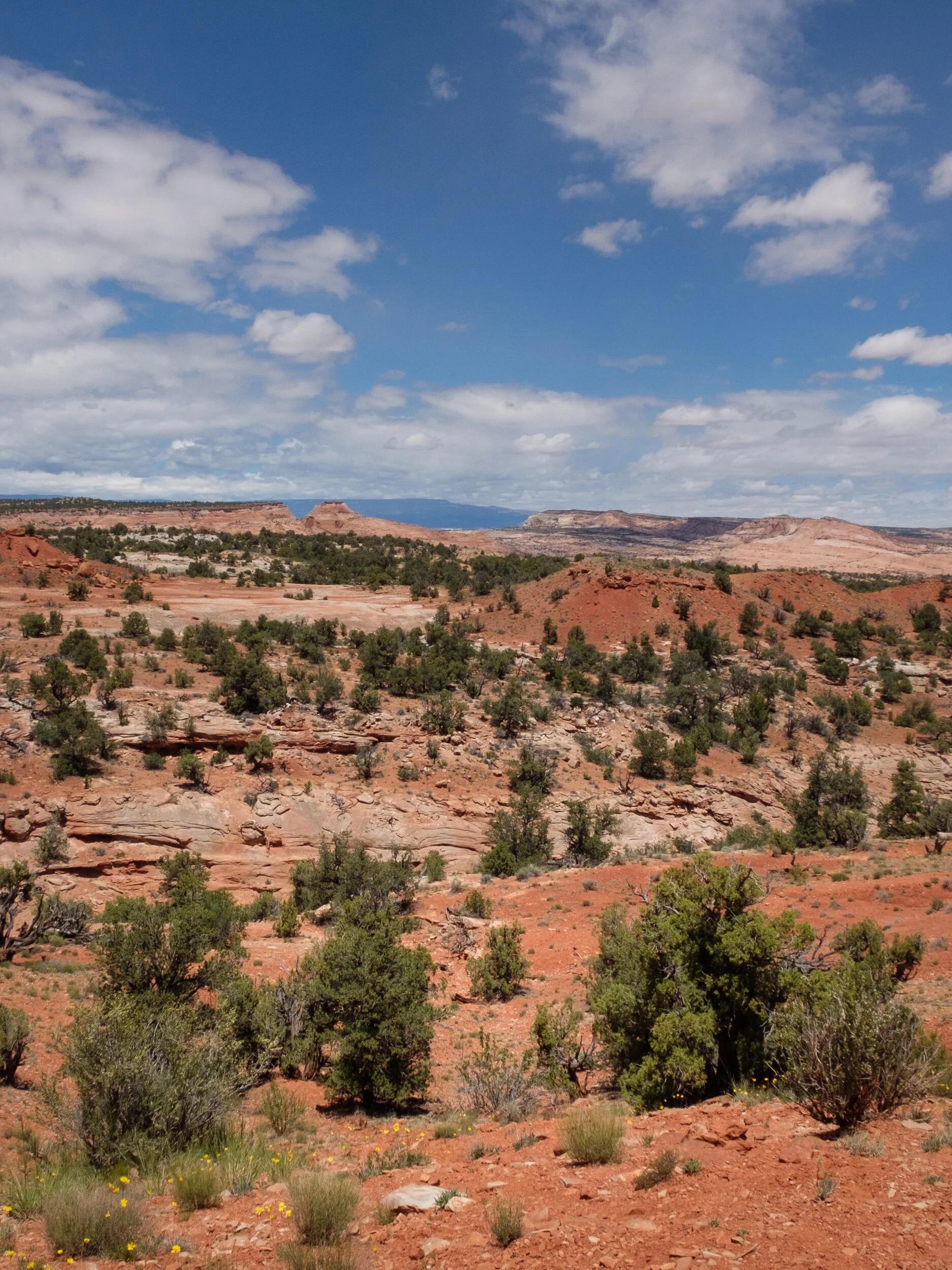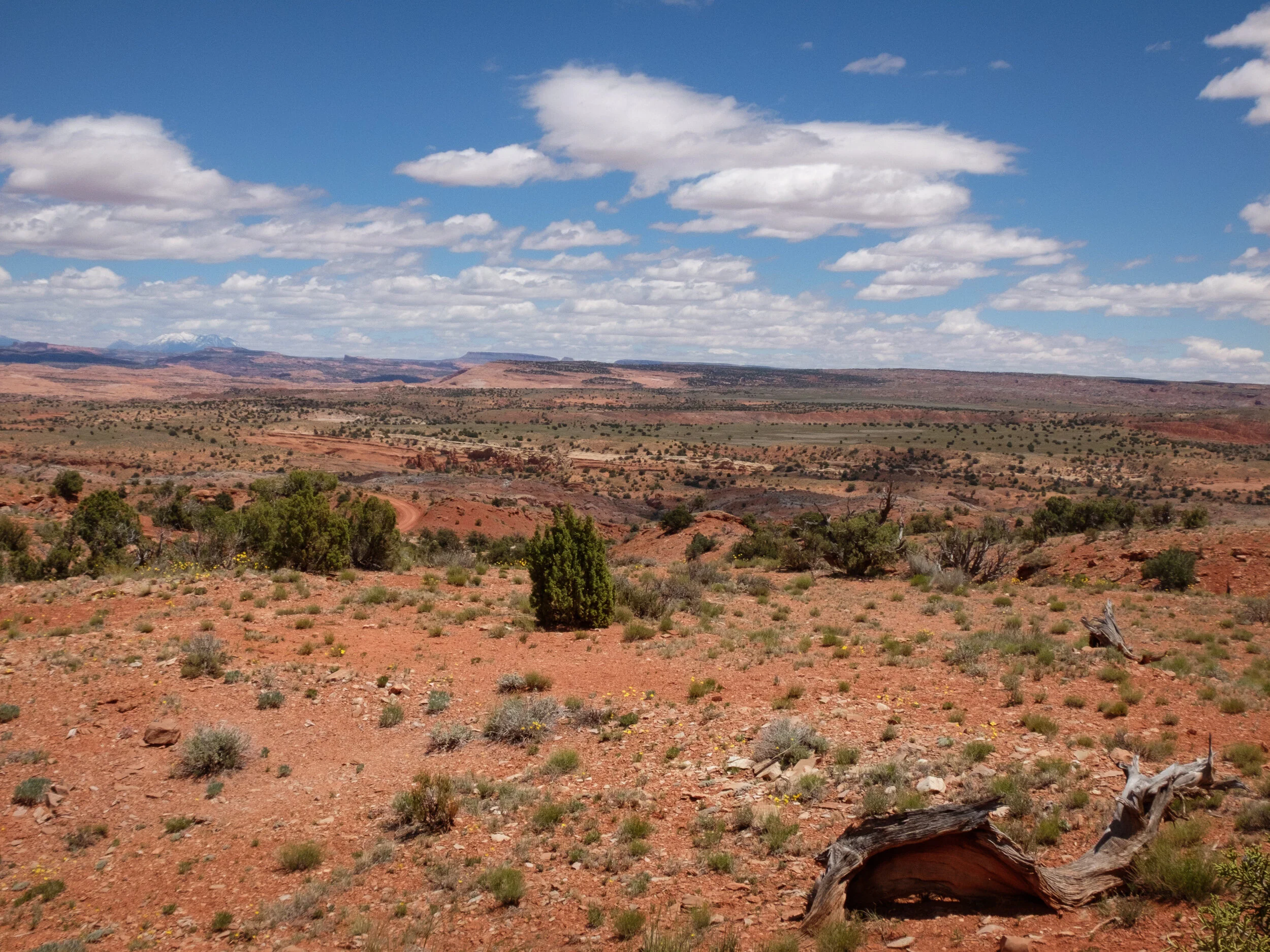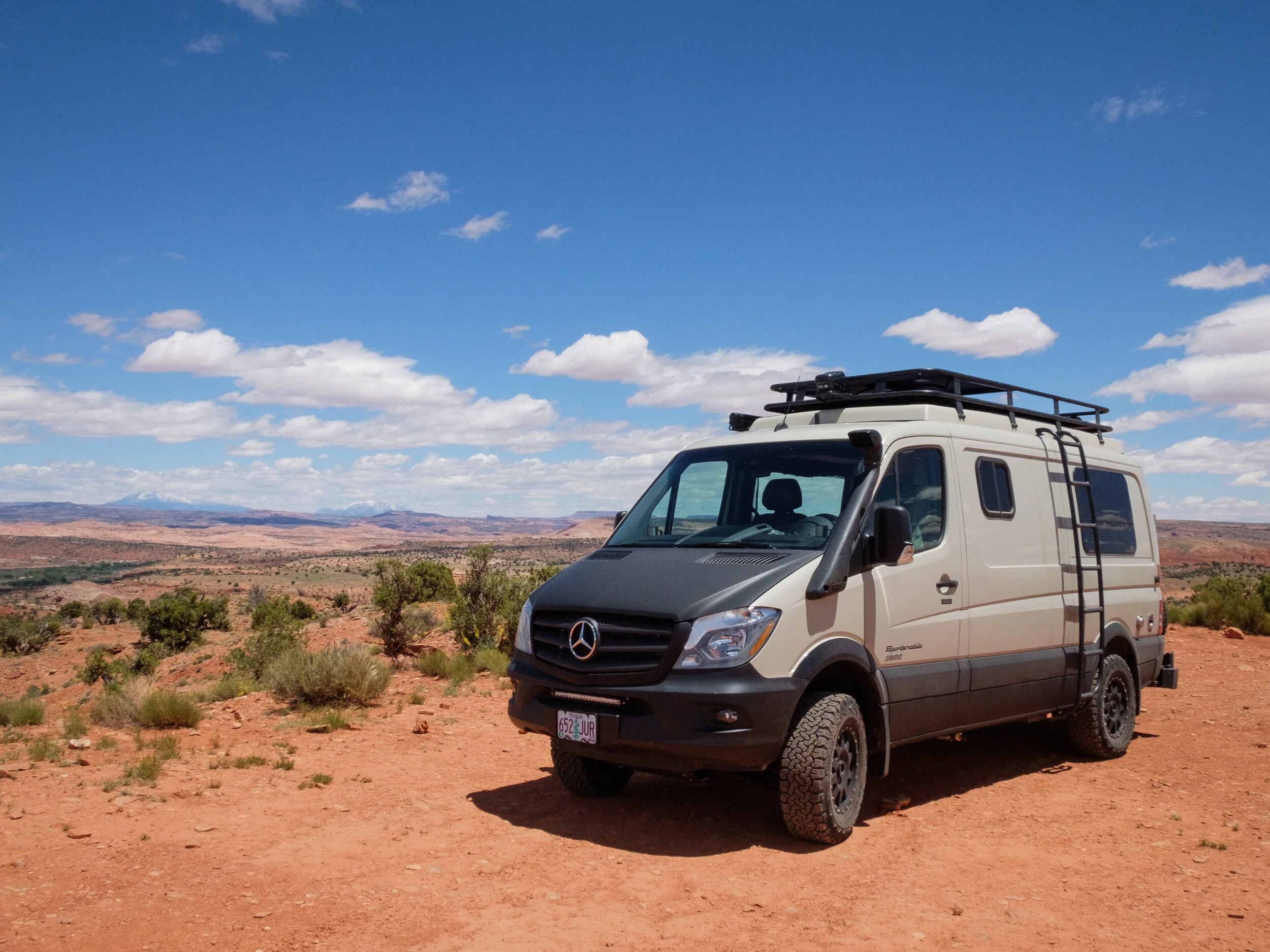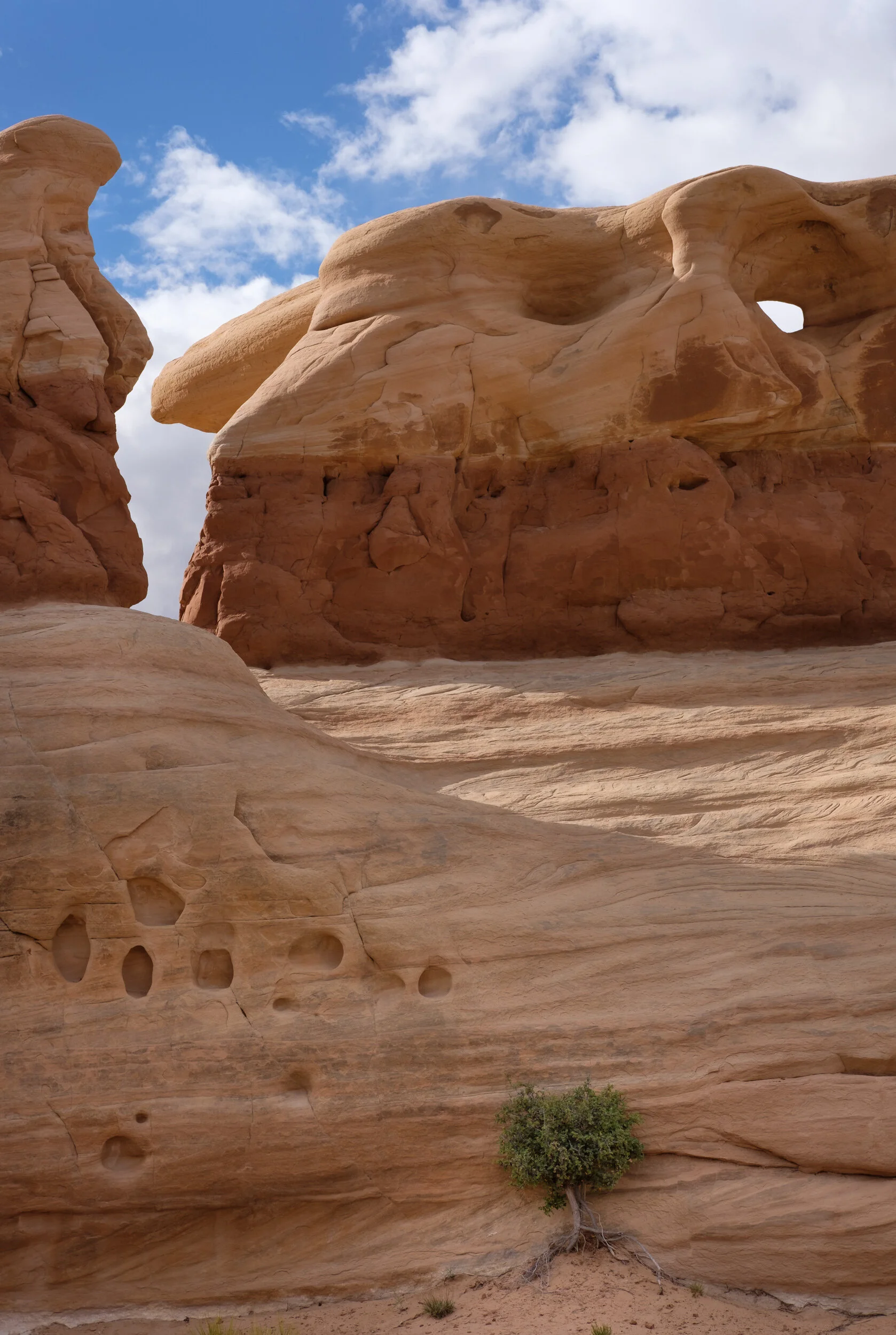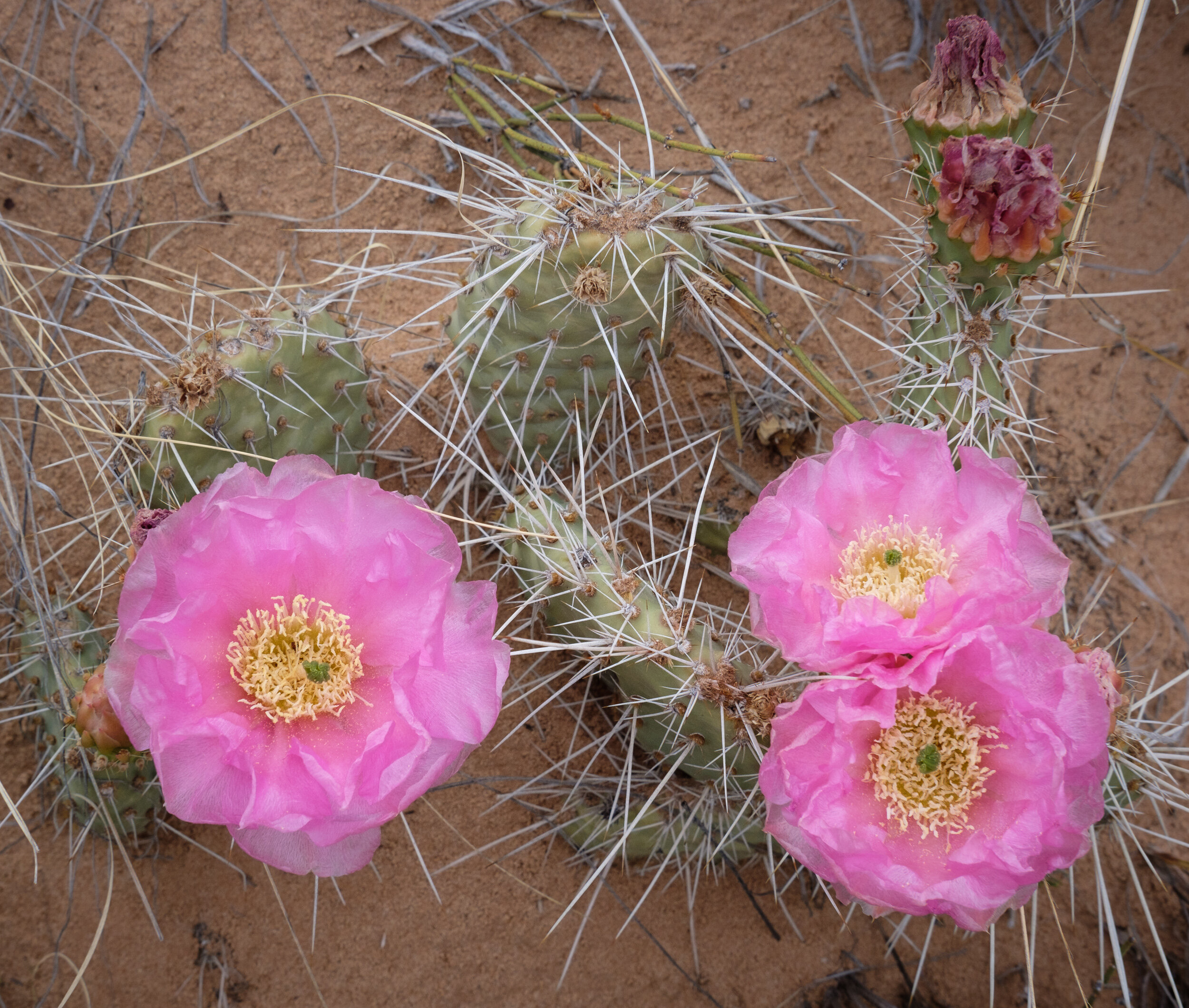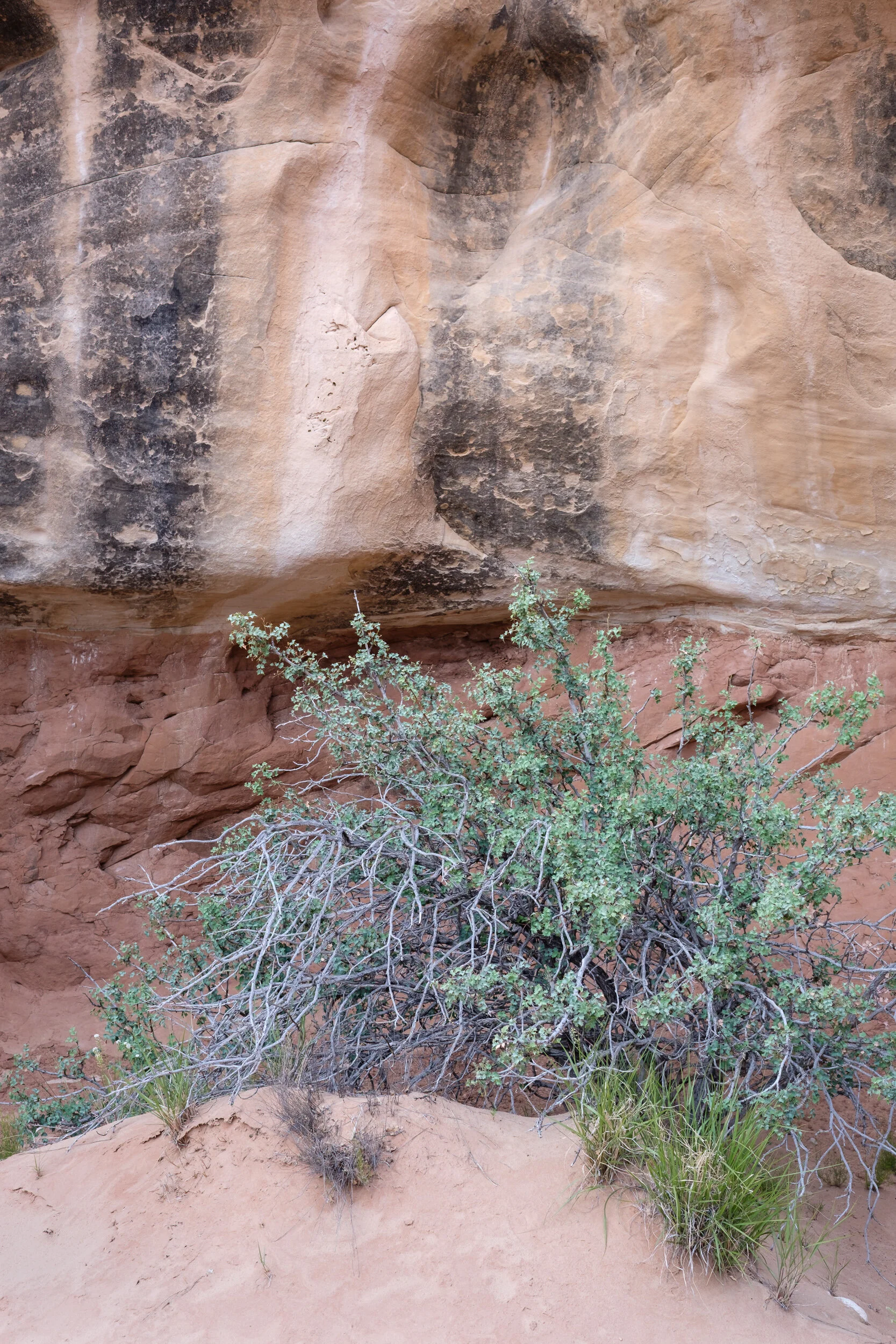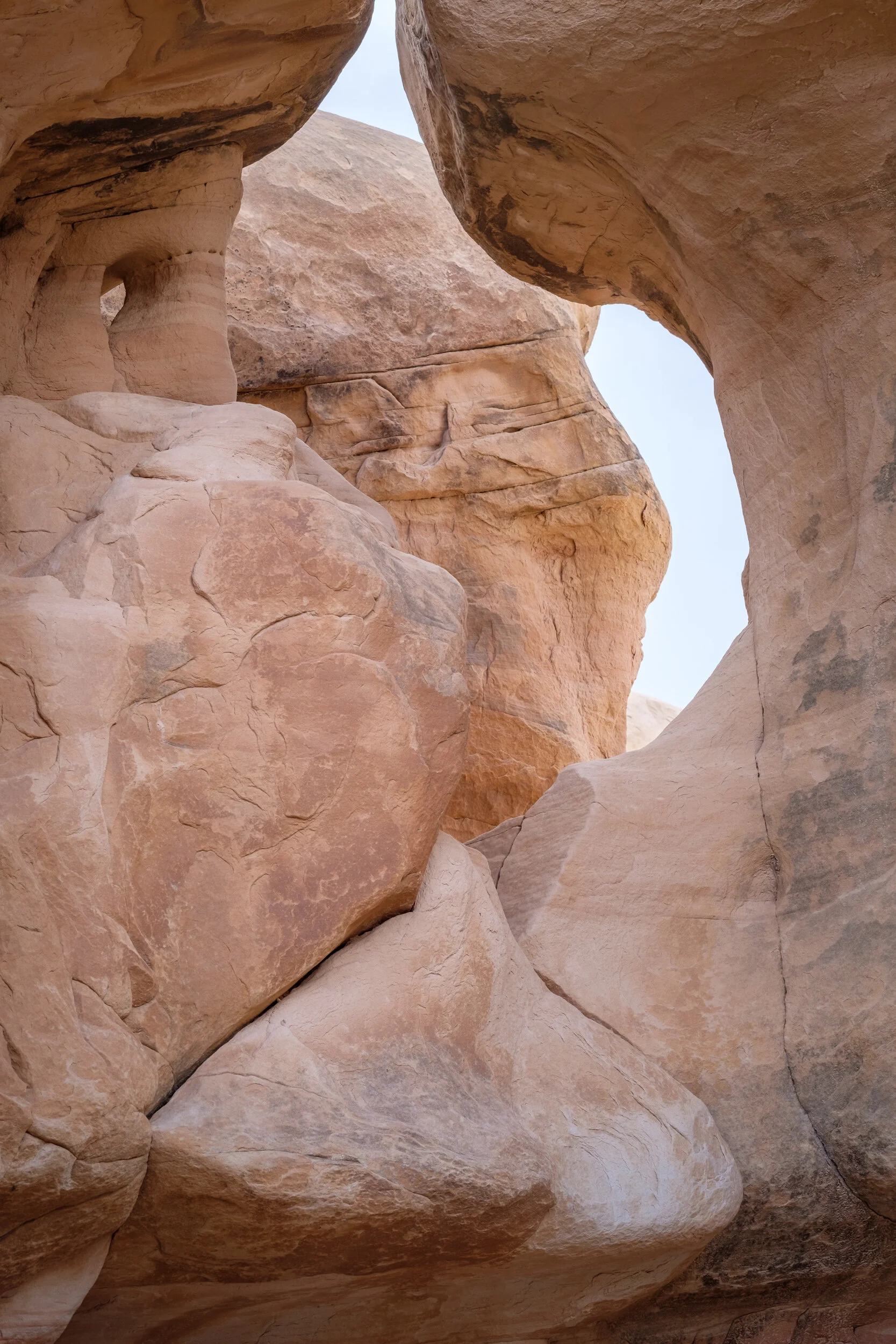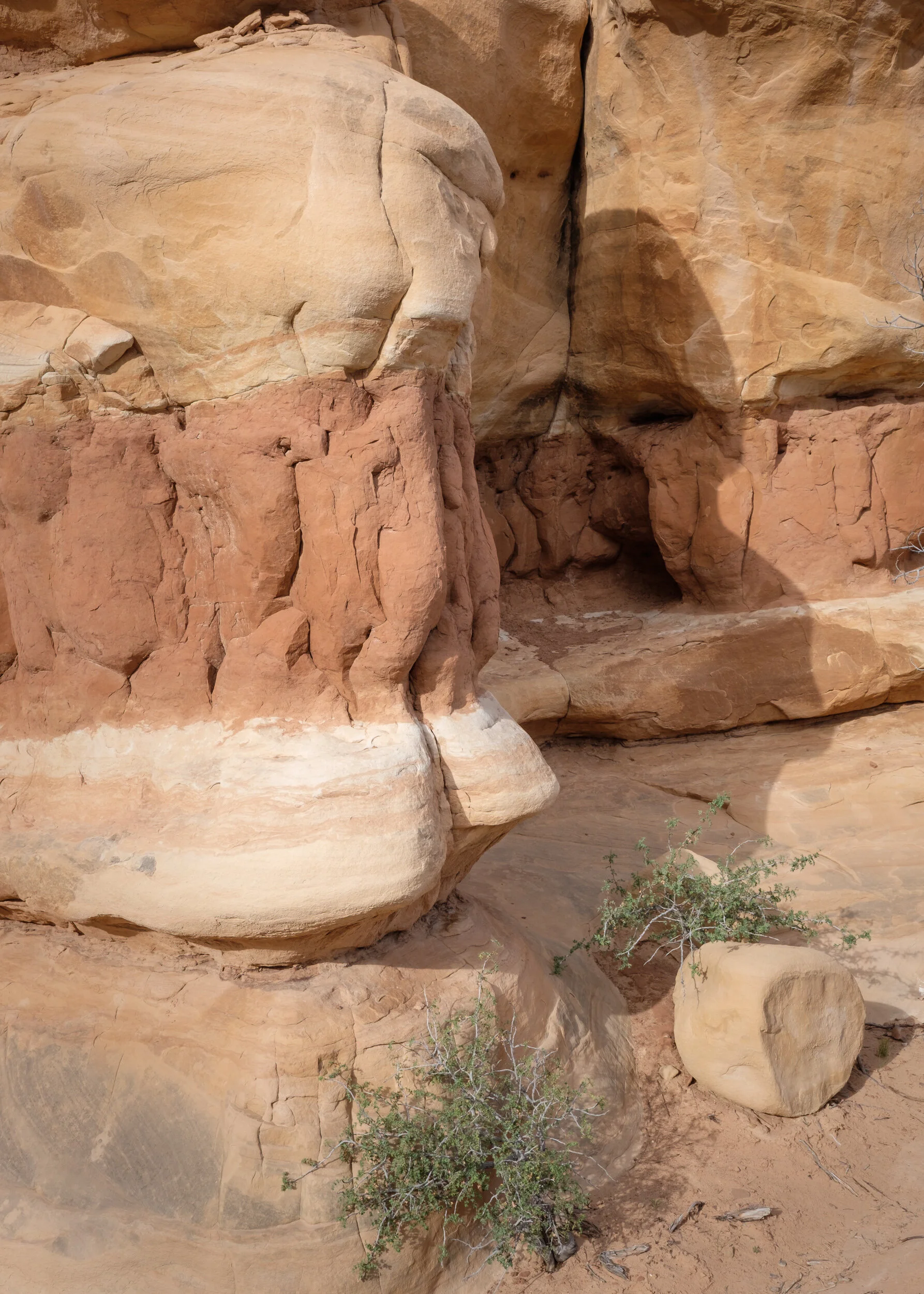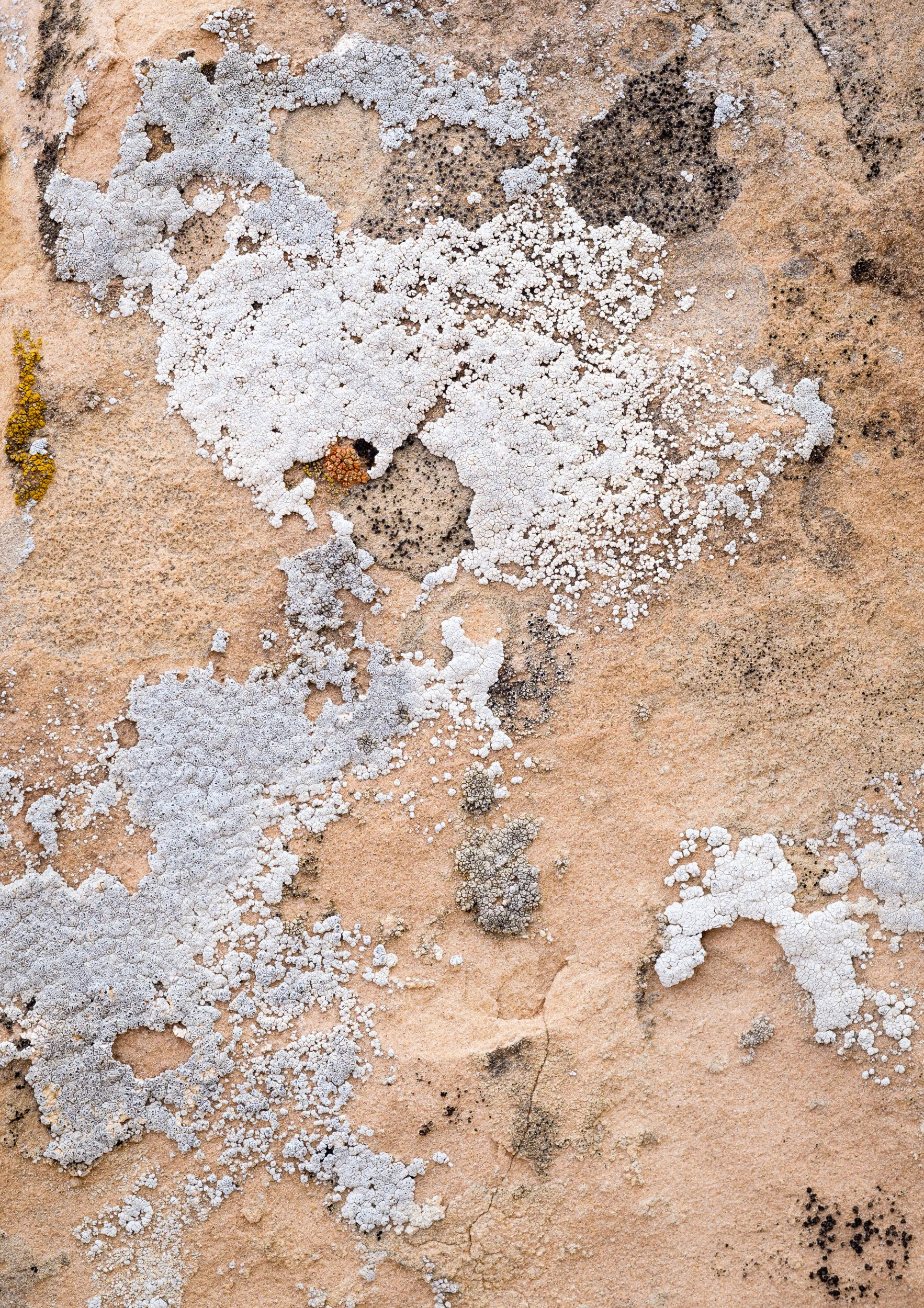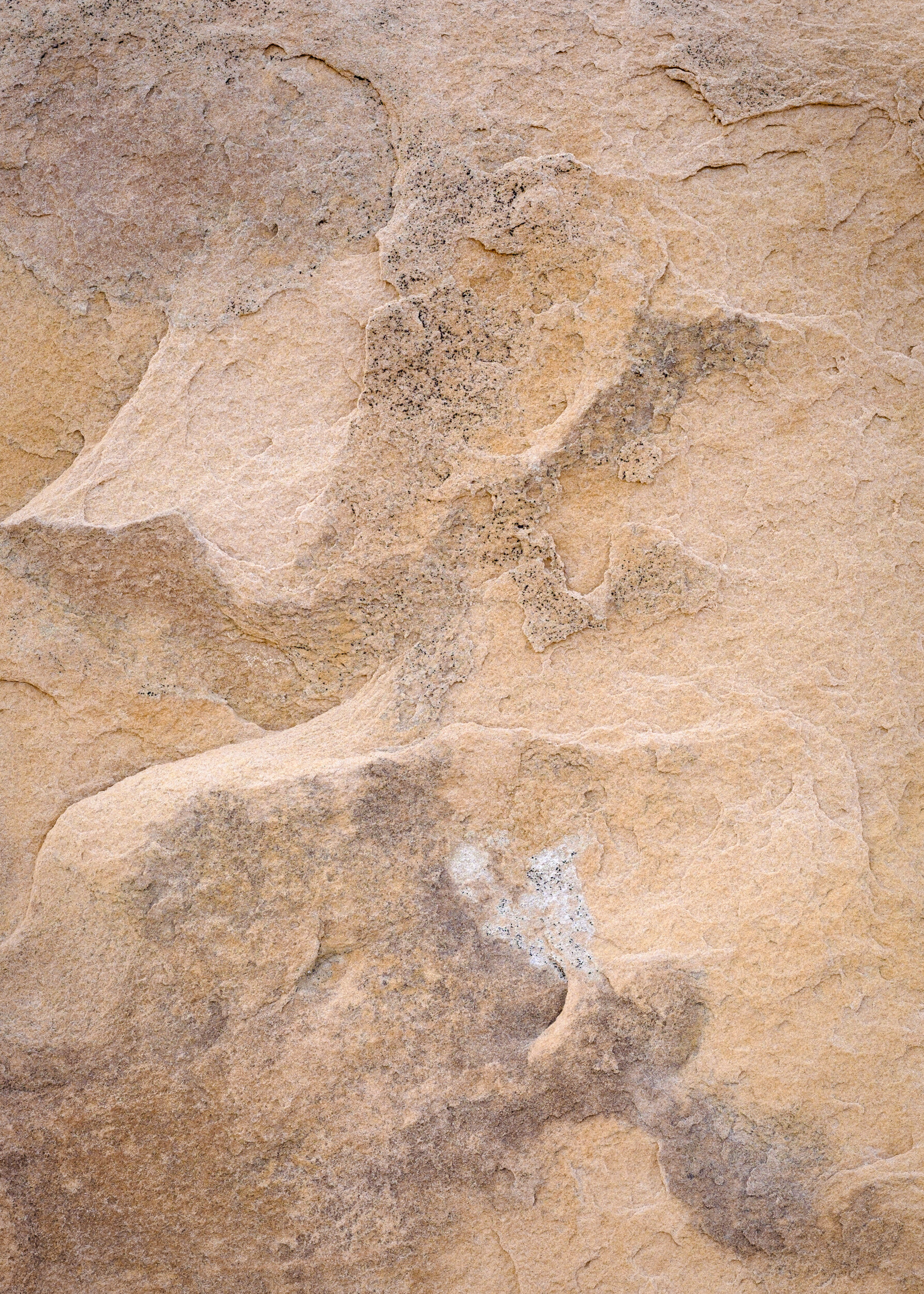The Grand Staircase-Escalante - Part 2
This is going to be a fairly lengthy, image intensive post with over 25 images. As I was going through my images to see which ones lept out at me, or would otherwise help me tell the story of the day, I wound up working on lots of different images. None said, “this is the image of the day” though many were not bad at all. Ultimately I wound up thinking that it had been a mighty fine day of photography. About as good as it gets short of realizing you’ve made one of the best images you’ve ever made. So I decided that the post would not just be about what happened that day, but about how a day can progress photographically, if things are working out well.
We set our alarm clock early that morning to make sure that not only could we have time to make coffee and drink a good portion of it, but to also make sure we did that well before the start of nautical sunrise. It was cold when we got up, very cold, so we had our down jackets on and something warm to start off the morning was a necessity.
The first image of the day was sitting right in front of us as I made coffee in the Devil’s Garden parking lot at around 4:15 am.
Over time, a photographer learns about the many ways that cameras, lenses and sensors are very different from the human eye(s). Sometimes, photography is about trying to overcome those differences, to figure out how to capture on “film” what one sees. Other times, however, it’s about utilizing what the sensor can see that the eye can’t. In pre-dawn photography, it’s often about the latter because sensors don’t have the rod/coneconfiguration that the human eye does. Which means it can see things in color when, to the human eye, things are still very very dimly lit and without color
The above image falls into that latter category. It came about as I was walking around Beast to close her up, I realized there might be something glowing off the escarpment and wondered whether the camera could capture it. David DuChemin talks about curiosity being a photographic trait and the importance of asking questions - most particularly, “What if?” And as Fred Picker used to say, “If you want to know something, do it yourself and find out.” So I found out whether in fact the pre-dawn glow was reaching the cliff face, and once again was reminded of how different the camera is from the eye.
After these first quick shots, Ann and I headed out into Devil’s Garden to the morning locations we’d identified the day before. It was still well before dawn, but you could tell that the sun was making its way around the earth and the sky was beginning to glow with color.
And then it became that race against time. With the sun moving approximately 1,000 miles per hour across Earth’s face, you often get special light conditions for mere minutes before they disappear, so once you make one image, you quickly search for another because you know that the lovely morning light is ephemeral.
And you know that the sun pops over the horizon like a sledge hammer. Bam! Everything changes once that happens. But you wait a few minutes to watch the 1,000 miles an hour happen as the sunlight works its way down the cliff - knowing you won’t have to wait long. Then make the photograph and move on.
I turned away from the sun and made my way over to a view in another direction, where the sun was being blocked by a cloud. Bits of light worked its way through the veil giving some soft color in the distance, and there’s even an odd bright spot in the middle of the frame that’s a burst of sunlight that made it through a hole in the cloud.
Ann made her way over towards me and I worked my way towards her. We met at an odd arch at Devil’s Garden and photographed through it from different angles. I’d photographed the entire arch last time, this time I was more focused on merely hinting at the arch, and letting light and shadow hint that it is there.
The sun kept rising and made it more and more difficult to photograph without odd half-lit hoodoos in our images. So we started making our way back to Beast. Still, the rising sun offered new possibilities.
And the clouds occasionally softened the harsh contrast of light and shadow to make some images work.
After having climbed all around Devil’s Garden rushing from one shot to the next, both Ann and I were mentally and physically wiped, so we headed back to Beast to have breakfast and to finish up our thermos of coffee. In the meantime, that gave the sun time to rise enough so that the hoodoos weren’t half-lit.
By the time we were ready to get at it again, Devil’s Garden offered us a whole different subject for us to explore with stronger shadows and more pronounced forms.
Sometimes when approaching a subject, the notion of just photographing whatever you want gets to be overwhelming and you wind up either not photographing at all, or photographing but with no real focus. So I started back with the idea of photographing the vegetation of the landscape and its interaction with the bizarre forms that are present in Devil’s Garden.
At times, the shadows of the plants play with the rocks,
. . . and sometimes its the shadows of the rocks that become pronounced.
I increasingly became more focused on the shadows formed by the rocks and the spaces they created, and my positioning started getting closer and closer to the rocks.
And I eventually focused on the rock itself, naturally stepping in for a composition that still tried to capture that sense of shadows and space.
But I also started moving backwards to capture larger and larger spaces. It was really a great way to explore the area, looking for spaces.
As the sun kept rising, I started looking around for more simple forms, shadow and textures that begged to be appreciated.
We had ended a long, wonderful morning of photography and were, once again, mentally and physically exhausted. Twice in one morning. We couldn’t complain. By this point, vehicles of people started arriving and it turned from a trickle to a steady flow of vehicles driving in, people walking around, and vehicles driving out.
The sun was getting fairly high in the sky, which meant that the shadows didn’t play along the rock bases quite as nicely, and the light was flattening every thing out. So Ann and I decided to take a drive down Harris Wash Road (a smart move for at least a couple of reasons) just to explore a bit and to see if there were areas there worth photographing.
It was a pleasant drive that took us through a variety of landscapes starting with an area similar to our campsite, then quickly transitioning to red rocky areas, through colorful green-white barren wastelands and into woods on the bottom of the wash.
Harris Wash road crossed the plateau for awhile and then stopped at a point that overlooked the Escalante north, before it descended.
In one direction, you can see how the landscape gets etched with steep, rocky ravines.
In the other, you could see how the grander landscape opens up with the uplift-steps off in the horizon.
And, of course, we had to get a shot of Beast in her element.
We took Harris Wash Road to its end, stopping to take one photograph and scouting out several more sites, then turned around for the trip back. Patches of sand and the steep climb back up to the plateau were not problem for Beast.
As we got to Hole in the Rock Road we decided that Harris Wash offered us such interesting changes of landscape that we’d go down the road a bit and take the next turn off on Egypt Road. What a difference! And not in a good way. The moderate bumpiness and occasional corrugations on Harris Wash Road were nothing compared to the mind shaking, vehicle rattlingcorrugations of Egypt Road.
Corrugations are formed by vehicles driving fast down dirt roads and are caused by the harmonics of the suspension going up and down. The secret to driving on corrugations is to find the speed that harmonizes with them. You know it when you feel it, or better put, radically don’t feel it. Now, what you’re really doing is going from corrugation ridge top to ridge top, which means you don’t really have the best of contact or control with the road, but it really makes the ride a whole lot better. A bit slower and it doesn’t work. A bit faster and it doesn’t work. You go at whatever speed works best with the corrugations there, which is usually somewhere between 18 and 27 mph.
Well, on Egypt Road it simply was not possible to find a harmonizing speed. After about 6 miles, we gave up and turned around. We knew that Beast had some residual issues from the (mis)adventure and we didn’t want to aggravate them. Well, once we got back to the Devil’s Garden parking lot we did a quick inspection. Oh well, we didn’t turn around quickly enough - the screws on the smaller panty had come out again. So after a quick repair, and confirming that everything else seems to be working fine, we got back to photographing.
One of the advantages of staying in one place and photographing a location time and time again, or of returning over time repeatedly to the same location, is that it forces you to start seeing things in new ways because you don’t want to make the same images over and over again. However, it’s a lot easier said than done. One can’t just say, “I’m going to be creative!” It’s work and you have to really push yourself to break through your technical and visual limitations.
As I mentioned above, sometimes imposing limitations on yourself, whether compositional or technical, helps to narrow your thinking and gets you to focus on key aspects of your subject to work on. And then you keep trying different various on that same theme, technique or limitation to see where that takes you. But other times it’s great to think of it in terms of playing, which we do way too little of as adults. But even when its playful and fun, it’s work. Serious work. I set out that afternoon with no theme or limitation in mind - it was explore and see what I can find. Push myself to see more or differently.
Sometimes you realize that there are multiple images to be made at a single location - a photograph within a photograph. That’s an exercise I used to give my students - give them a photograph and see how many other photographs were within that one image. That happened to me early during our afternoon session. First . . .
and then . . .
I wound up making a lot of images that day that seem to work in both B&W and color. I think that’s so because of the strong shapes and shadows that are created by the rocky forms.
At one point I even hand held some images of cactus, not able to figure out how to set up my tripod around a group of cactus without impaling myself.
After the cactus I returned to the vegetation-rock juxtapositions I’d photographed earlier in the day and stuck with that for awhile.
And then turned again to the rocky forms that are present everywhere in Devil’s Garden, both with and without vegetation.
As the day was ending, I started seeing a whole series of compositions, and just went with the flow.
Even after we’d decided to return to the car, I had to stop to make yet one final image I found, perhaps the most subtle of the compositions.
Another two and a half hours of photographing had passed and once again we were exhausted. We made our way back to the rig to relax a bit, ate dinner and waited to see how sunset would turn out. All the time people would come by and ask about Beast, which is a pleasant enough way to pass the time. She sure is popular.
All the while we were watching the sun track towards the horizon, but things eventually started looking pretty unhopeful. Clouds began forming on the western horizon and staying there, which meant that the sun would be blocked. Devil’s Garden is lower than the surrounding area, so the idea of getting the Garden with the last of the day’s light is really not a question, but the clouds meant that we wouldn’t even be able to have the golden light that comes in the hour or so before sunset.
As the clouds kept building up, we decided to call it a day. We headed back to our previous campsite only to find a large family with an RV right next to our spot, and a pick-up with a pop-top in our spot. We decided we wanted a bit more privacy (and quiet - nothing like a couple of kids running around and screaming as you drive up to make you appreciate that the Escalante is a vast area, with quiet to be found) so we headed back to Harris Wash Road as the sun was setting (behind the clouds as we’d suspected it would).
We passed a couple of occupied spots as the sky was starting to darken, but fortunately found a pull-out behind a giant boulder in an area I’d noticed earlier in the day when we’d driven by. It was nothing fancy, but it would do. We were tired and simply wanted to get to bed. It had been a great day of photographing.
In short, it turned out to be a very rewarding and enjoyable day of photography and exploration. It doesn’t get much better than that.
